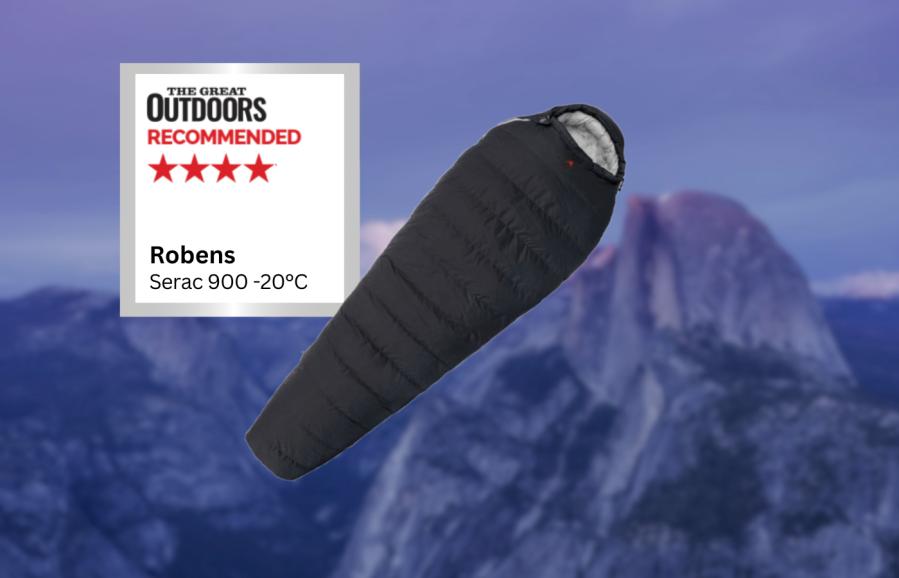Peter Macfarlane finds the duck down Robens Serac 900 -20°C extremely comfortable for its weight.
The Robens Serac 900 looks like it has quite a trim fit, but once inside the stretch seams on the upper body baffles allow very good arm movement whilst keeping the down close to your body for very good feedback (the feeling of warmth from the insulation) from the down fill insulation. This is very comfortable and feels very natural to sleep in as I can move around pretty normally.
Peter Macfarlane recommends
The performance is high and it’s almost hidden under a price which is very good indeed.- comfort
- performance
- price
- weight
- pack size
| Quick specs |
|---|
| Price: £351.99 |
| Weight: 1490g |
| Fill: 900g of 600 FP 85/15 RDS certified duck down |
| Shell: recycled 20D 400T nylon ripstop outer, recycled 20D 400T nylon taffeta inner |
| Construction: stretch box baffles on upper body, box baffles, zip baffle, adjustable hood and shoulder baffle |
| Zip: ¾ length two way |
| Length: 220cm |
| Rating: comfort: -12°C limit: -20°C extreme: -43°C |
| Sizes: one size |
| Women/Men’s version: unisex |
| www.robens.de |
The comfort extends to the well-shaped hood and the shoulder baffle which fit and function well. These are easily adjusted from inside the bag via a toggle which has different shaped cords running through it to adjust the upper and lower hood and a bungee inside for the baffle.
The main zip runs smooth and an anti-snag strip on the baffle functions reasonably well. I like the footbox which is shaped nicely for a resting position with just enough room to wiggle and move my feet while keeping the insulation close.
The Robens Serac 900 has a duck down fill which tends to be unusual for a bag of this rating, we’re more used to seeing goose down promoted as the higher performance option these days, but the bag lofts incredibly well, it’s very soft and compressible and has the best temperature performance rating of the bags I tested.
The inner fabric is very soft and comfortable against the skin, the outer fabric has a good DWR that beads well and only wets out after repeated rubbing against a damp surface. There are drying loops at the foot.
The weight is getting quite high at a kilo and a half and the packsize compressed is a chunky 26cm x 23cm but the performance is high and it’s almost hidden under a price which is very good indeed.
Testing notes
Peter used the bags at camp and in bothies from late autumn 2023 to spring 2024 over a variety of conditions and temperatures. The packed sizes were taken from putting each the same compression sack and the weights were taken on digital scales without any stuff sack. You can compare this bag with others Peter tested in our buyer’s guide to the best cold weather sleeping bags.
This review was first published in the January 2025 issue of The Great Outdoors.








